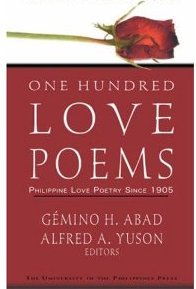Filipino Tula - Philippine Poems - Filipino Poems
Filipino tula, or Philippine poems can be traced back to the pre-colonial time, which is before 1521 when Spain “discovered” the Philippines.
Pre-colonial Philippines has a rich collection of folk songs, speeches and narratives. They also have local rituals and customs which were influenced by their economic ties with its Southeast Asian neighbors.
The pre-colonial people have bugtong (riddles) and talinghaga (metaphor) which usually tests one’s observation. There are also proverbs which infuse wisdom and good judgment through short and rhyming verse.
Its comprehensive form which is a mono-rhyming hepta-syllabic is called tanaga. It is also called basahanon of Bukidnon and daraida of Panay.
The folk narratives are also known as epics and are among the more popular Philippine literature. It is usually magical, talks about folk heroes and explains the origin of a place or a thing.
Among the popular Philippine epics are: Lam-ang (Ilocano), Darangen (Maranao), Kudaman (Palawan), Mangovayt Buhong na Langit (Manobo), Tudbulol (T’boli), Hud-hud (Igorot) and Ibalon (Bicol). These epics are also performed during festivities.
Filipino tula, or Philippine poems like Philippine literature flourished during the late 19th and early 20th century. It was primarily written in Spanish, English and Tagalog. During the Spanish rule, poetry was either religious or secular.
Religious poetry includes catechism materials like the Guidelines for the Christian Life in Tagalog Language, which was published in 1605. Other religious literature includes the novenas to the saints and the famous pasyon. The Pasyon is religious Filipino tula or poetry which narrates the passion, death and resurrection of Jesus Christ.
 Philippine Poems |
Francisco Balagtas and Jose Corazon de Jesus lead the list of secular poets who wrote Filipino tula. Both Balagtas and De Jesus wrote in the Romantic tradition which speaks of the loyal lover, the elusive beloved and the rival.
Other lyricists in this genre are: Isabelo de los Reyes, Jacinto Kawili, Rafael Gandioco and Leona Florentino. Another kind of secular poetry is the Tagalog’s metric romance called awit at korido. The most famous awit and korido poetry are: Ibong Adarna and Gonzalo de Cordoba.
The Propaganda Movement in the late 19th century saw the rise of the literary figures of Jose Rizal, Marcelo Del Pilar, Graciano Lopez Jaena, Mariano Ponce, Emilio Jacinto and Apolinario Mabini among others.
From 1898 to the 1940s produced prominent poets like Fernando Maria Guerrero and Manuel Bernabe as well as leading writers like Claro M. Recto, Wenceslao Retana, Antonio Abad and Guillermo Gomez. They all wrote in Spanish and Rizal’s Mi Ultimo Adios is one of the most famous poems in the Philippines.
The American colonial rule ushered in the genius of Jose Garcia Villa and Angela Manalang Gloria who wrote in free verse. The Balagtas type of poetry was still used by Alejandro G. Abadilla which in turn influenced the Filipino poems of Pedro Ricarte, Rolando Tinio and Virgilio Almario.
Meanwhile literature in the vernacular were serialized in the weekly magazines like: Liwayway, Bannawag, Bisaya and Hiligaynon. The prominent writers of the vernacular are: Faustino Aguilar and Lope K. Santos.
The 1960s and the 1970s witnessed another tradition in the state of Philippine literature, it being the Martial Law Era. From thereon, Filipinos continued to write Filipino Tula and literature which talked about society, the government, ethnic or gender issues and some are personal.
Recent Philippine poems also witness the development of the art of poetry owing to the increase in materials as well as workshops both locally and abroad.


